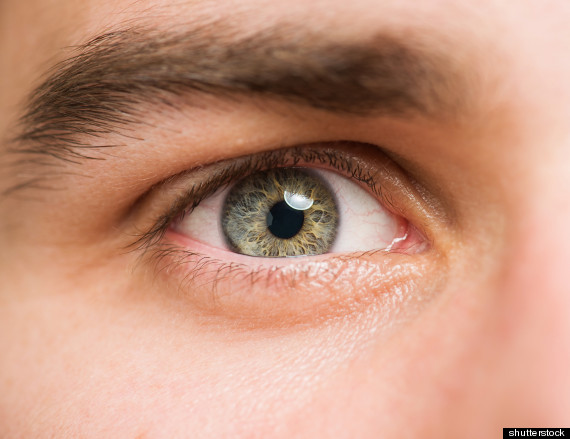We collected 13 lesser-known facts about tears — read ’em and weep.
There’s more than one type of tear.
Not all tears are created equal. Basal tears are the ones in our eyes all the time, and serve the purpose of lubricating, nourishing and protecting the eyes, Bylsma and her co-author Ad J.J.M. Vingerhoets, of Tilburg University in The Netherlands, wrote in their paper, “The Riddle Of Emotional Tears: Why Do We Cry?” The second type of tears, called reflex tears, form to protect the eyes from irritants, such as wind, smoke or onions. And there’s some evidence to suggest that these two kinds of tears are chemically different from each other.
The third type of tears are the ones we’re probably most familiar with, those spilled after a fight with a partner or a powerful movie: emotional tears. One 1980s study found that emotional tears may contain more protein than other types of tears, but the science is far from conclusive at this point.
Researchers don’t know exactly why we cry.

But theories abound. Evolutionarily speaking, some scientists suggest that humans cried to signal distress, but without making noise, such as a yelp. “You can imagine there’d be a selection pressure to develop a signaling system that wouldn’t let predators in on the fact that you’re vulnerable,” Vassar College psychologist Randy Cornelius told NPR.
As human behaviors develop over time, Bylsma explains, they often begin to take on more than one purpose. Another reason humans might cry, she says, is to signal there’s a problem or garner comfort from those around us. “Crying is a way to elicit support from others during times of distress,” she says. Infants cry to get the attention of their parents, while an adult might cry to get the sympathy of a friend or loved one. It can also lead to quicker conflict resolution in the heat of an argument. “Crying seems to elicit compassion and guilt, and that itself may be an evolved mechanism to save relationships in distress,” Jesse Bering, of the Institute of Cognition and Culture at Belfast University, told NPR, “It’s hard to punish somebody or argue with someone who’s crying … It’s like a trigger that tells us to back off.”
Biochemically, the composition of tears is similar to saliva.
And, among other things, they’re made up of proteins, salt and hormones.
Women really do cry more often than men.

One estimate puts it at 5.3 times per month for a woman and 1.4 for men. Another suggests that women cry two to five times per month, compared to men’s .5 to one.And, according to German research reported on by The Telegraph, the average crying session lasts six minutes for a woman, versus two to four minutes for a man. (That same research found that crying turns into sobbing in 65 percent of cases for women, and just 6 percent for men.)
But how big that gender difference is could be cultural.
Bylsma wrote in one of her papers: “The amount of gender difference in crying also seems to vary with specific country characteristics. Surprisingly, in Western cultures with greater freedom and equal treatment for women, women cry more often than in more traditional cultures, whereas [the] differences between men in different cultures are less substantial… This insight strongly challenges the notion that crying is just an involuntary, reflex-like symptom, resulting from specific feelings.”
Biology might also be at play. The Wall Street Journal reports:
Women are biologically wired to shed tears more than men. Under a microscope, cells of female tear glands look different than men’s. Also, the male tear duct is larger than the female’s, so if a man and a woman both tear up, the woman’s tears will spill onto her cheeks quicker. “For men and their ducts, it’d be like having a big fat pipe to drain in a rainstorm,” says Louann Brizendine, a neuropsychiatrist at the University of California, San Francisco.
Tears come from the lacrimal gland.

And it’s found in the outer part of the upper eye. When excess tears are produced, they drain into small ducts to the nasal cavity. And if you have too many tears to drain, they’ll spill out of your eyes.
There’s an anatomical reason why crying makes your nose run.
“The nose is running because the tears actually go into the nasal passages,” Bylsma says. “Some of them end up in your nose, so your nose runs.”
Those headaches that can creep in after a sob session aren’t quite as easy to explain. Bylsma speculates that it might have something to do with dehydration from the water lost in tears. Or it could be because muscles tend to tighten up when we’re upset.
Syn-propanethial-S-oxide is the reason onions make you cry.

It’s a chemical irritant that stimulates the lacrimal gland, which makes you tear up.
Our tears might be sending signals to others.
At least according to one 2011 study, which showed that testosterone and sexual arousal take a dip in men after they smell a woman’s tears. “We conclude that there is a chemosignal in human tears, and at least one of the things the chemosignal does is reduce sexual arousal,” study author Noam Sobel, a neuroscientist at the Weizmann Institute of Science in Israel, told LiveScience after the research was published in the journal Science.
Crocodile tears are real.

Well, according to one University of Florida researcher, anyhow. Kent Vliet wrote in a 2007 paper that crocodiles really do cry — but not because they’re sad. He recorded seven animals, all of whom were closely related to crocodiles, and noted that five of them teared up while eating. While the exact cause of the tears was unclear, Vliet said in a statement that it definitely wasn’t grief: “In my experience, when crocodiles take something into their mouth, they mean it.”
“Crocodiles appear to produce tears all the time,” Adam Britton, founder of the website Crocodilian.com, told National Geographic. “Their function is — like our own tears — to lubricate the eye. This may be even more relevant for crocodiles because they have a third eyelid.”
There may indeed be such a thing as a “good cry.”
Much of Bylsma’s research has focused around the cathartic quality of crying. And how good you feel after a cry might come down to the social situation, she says. If you tear up around supportive people in a comfortable environment, you’re more likely to report feeling better afterward than if you were trying (unsuccessfully) to hold back tears in a place where you feel vulnerable, unsafe or embarrassed. In one study she co-authored in the journal Current Directions in Psychological Science, Bylsma and her collaborators concluded, after analyzing more than 3,000 reports of crying episodes:
Consistent with pervious field studies, the majority of participants reported mood benefits after crying. However, respondents showed significant variation in their reporting of mood benefits, with a third reporting no mood improvement and a tenth even reporting feeling worse after the crying. Importantly, variation in social-environmental factors tracked the mood benefits of crying: Criers who received social support during their crying episode were more likely to report mood benefits than were criers who did not report receiving social support. Likewise, mood benefits were more likely when the precipitating events of a crying episode had been resolved than they were when the events were unresolved.
Some researchers have also suggested that emotional tears, unlike basal or reflex tears, contain stress hormones, which the body is able to physically push out through the process of crying. Another theory is that crying triggers the body to release feel-good endorphins (the same ones you get from exercise or laughing), writes HuffPost blogger Judith Orloff, M.D., author of Emotional Freedom: Liberate Yourself From Negative Emotions And Transform Your Life. That might just be why a late-night Titanic viewing feels so good.
Happy tears aren’t all that different from the sad ones.

“One possibility is that happy crying really isn’t that different from sad crying. What both have in common is a period of intense emotional arousal,” Mark Fenske, Ph.D., associate professor in neuroscience at the University of Guelph, wrote for The Globe and Mail. “Indeed, brain regions associated with emotional arousal, including areas of the hypothalamus and basal ganglia, are connected to a section of the brainstem called the lacrimal nucleus that stimulates tear production.”
Bylsma explains that one theory of crying is that it helps the body to return to a state of homeostasis after being overly aroused — whether positively or negatively. Right after that peak in arousal, whether it’s immediately after winning an Olympic gold medal or walking down the aisle at a wedding, tears might help bring a person back to a baseline level of functioning.
Some people are more likely to cry than others — but why is less clear.
We know that women are more likely to cry than men, as are people who have experienced a trauma, anxious people, and people who are extroverted and empathetic, WebMD reports. And some of it might simply come down to individual personality differences. “Some people are just more prone to crying,” Stephen Sideroff, Ph.D., a staff psychologist at Santa Monica–University of California Los Angeles & Orthopaedic Hospital and clinical director of the Moonview Treatment Center in Santa Monica, Calif., told the publication. “Others ignore or are not as fazed by certain things [that provoke tears in criers].”
Other factors that can lower the threshold for crying, according to Bylsma, include mood or stress level, hormone fluctuations, mental health and fatigue.
